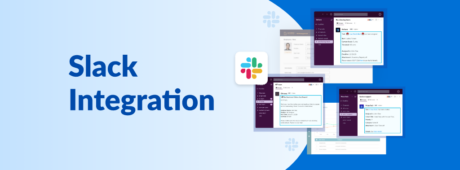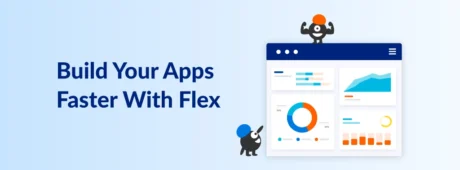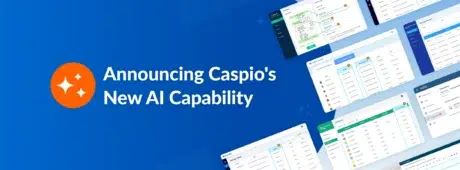Best Practices in Talent Acquisition Management Using Low-Code
November 15, 2023

The success of a company depends on its ability to attract and retain the right people. Recruiting employees is not just about filling job positions but about finding individuals who not only possess the required skills but also align with the company’s culture and long-term goals. You need both the right skillsets and the right mindsets.
The consequences of poor hiring decisions can be costly, leading to turnover, cultural misalignment and hindered growth. Recognizing the significance of talent acquisition, many organizations are turning to low-code technology to streamline their recruitment processes. Let’s explore the importance of recruiting the right talent and discover how low-code solutions can enhance talent acquisition management best practices.
Optimizing the Candidate Experience
As economies grow and potential applicants sometimes face an abundance of job offers, the candidate experience is more critical than ever. Recruitment is no longer only about evaluating the candidates; it’s also about leaving a positive impression on potential employees.
This is where customizable low-code applications shine. These portals allow organizations to tailor the application process to their specific needs, creating a seamless and user-friendly interface. Moreover, they enable automated communication that adapts to recruiter actions. For instance, when a candidate submits their application, low-code technology can trigger an automated response, acknowledging receipt and outlining the next steps.
As the recruitment process progresses, these portals can be programmed to send updates or requests for additional information, ensuring that candidates are informed and engaged throughout their journey. This level of customization and automation not only enhances the candidate experience but also lightens the administrative burden on recruiters, allowing them to focus on higher-value tasks, such as evaluating candidate potential.
In the competitive world of talent acquisition, customizable low-code application portals can come to the rescue when it comes to attracting and retaining top talent.
Streamlining the Hiring Workflow
Efficiency is a cornerstone of successful talent acquisition and custom application workflows powered by low-code technology can significantly enhance this aspect of the hiring process. These workflows enable organizations to create, modify and fine-tune their recruitment process to align with their unique requirements.
Whether it’s a straightforward job application or a multi-step evaluation process, custom workflows ensure that each step is optimized for efficiency. Recruiters can set up automated notifications, reminders and approvals, ensuring that no critical task is overlooked. By tailoring these workflows to the organization’s specific needs, hiring managers can reduce manual intervention, cut down on administrative bottlenecks and accelerate the time-to-hire. This not only benefits the organization by securing top talent more swiftly but also provides a smoother, more professional experience for candidates, which can be a significant competitive advantage in the race for talent.
Low-code technology is a powerful tool in streamlining the hiring workflow and ultimately delivering a more efficient, agile and effective talent acquisition process.
Dynamic Recruitment Team Collaboration
Recruitment teams often comprise a diverse set of professionals, each specializing in different phases of the hiring process. Low-code technology empowers hiring managers to create applications that allow for automated task division, helping them facilitate seamless team collaboration.
With dedicated specialists handling specific recruitment phases, such as sourcing, screening or interviewing, the recruitment process becomes more efficient and focused. Moreover, low-code platforms enable easier dynamic transitions when workload spikes or team members are absent, ensuring that no step in the process gets delayed.
This adaptability allows organizations to maintain the momentum of their talent acquisition efforts regardless of changing circumstances. The result is a recruitment team that can work more cohesively, leveraging the strengths of individual team members and responding swiftly to the dynamic needs of the hiring process. Low-code solutions offer a framework for enhanced team collaboration, making recruitment more agile, efficient and responsive to the job market demands.
Automate Reporting that Boosts Recruitment Teams
Because recruiters’ daily bread usually consists of dealing with a lot of human factors, it is of paramount importance to try and incorporate data-driven decision-making. Automated reporting can be a critical component of this process.
Low-code technology can be used to build powerful tools with automated metric generation, allowing organizations to effortlessly track and measure their recruitment performance. These reports provide real-time insights into key recruitment metrics, such as time-to-fill, cost-per-hire and source effectiveness.
What makes low-code technology particularly valuable is its ability to make these analytics accessible to a wider audience. Rather than relying solely on data analysts, hiring managers and other stakeholders can easily access and interpret these reports, fostering a culture of data-driven decision-making. This democratization of data ensures that everyone involved in the recruitment process can make informed choices, leading to more efficient and effective talent acquisition strategies.
Low Code, Top Talent
The success of any organization fundamentally hinges on its ability to attract and retain the right people – individuals who not only possess the requisite skills but also align with the company’s culture and long-term objectives. Recognizing the profound significance of talent acquisition, many forward-thinking organizations are harnessing the power of low-code technology to streamline their recruitment processes. This way, they can ensure that their talent acquisition strategies remain efficient, agile and well-informed, thus helping them stay competitive in the ever-evolving job market.















